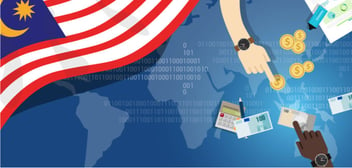

With reference to the blog ‘Security Issues while Switching from One Cloud Platform to Another‘ by Karthikeyan D, we touched upon the fact that with more and more companies moving their information to the cloud, there is an increased risk in security. That's especially true when it comes to the transition from a private to a public cloud service to reduce costs and receive greater service flexibility. In the end, we found that "one needs to look out for potential issues and understand them enough to make informed decisions" while changing from private to public.
Similarly, there are many such risks associated with storing your personal information at your workplace's cloud system and physical file system. In order to ensure that your info remains secure, the team at Sharefile put together a five-step guide for employees of all kinds who desire utmost privacy. Just a heads-up, I've trimmed it down to four steps as I felt two of them could be easily combined.
Keep a Solid Inventory
This first step is both logical and obvious. You are going to keep track of every item you have stored, especially confidential ones, including social security numbers and bank related details. The problem lies in storing the confidential details efficiently.
One solution is to maintain a spreadsheet in your mail account, like in the Drive offered by Gmail. This will allow you to keep tabs on the information you've provided and when you have provided it, not only to your company but other businesses and individuals too. It is also important to know who has access to the information.
Trim the Fat from your File Contents
Once you know what data you have on a file, you should sift through it to get rid of any unnecessary information. Basically, you'll be trimming the fat from your content, but this does not mean you can merely throw it into your recycle bin (virtual or physical). You need to use a wiping program to completely clean out the computer hard-drives, similar to shredding the useless files in office.
Also, make sure you're only storing information that is relevant to your workplace. That means you should get rid of items like the aforementioned social security numbers and credit card information if you think you won’t need them again. That holds true for the information you receive from your customers, too
Keep Your Files Locked
This is an obvious and incredibly necessary step to keep your files secure. Keeping them safe and out of potential threats can require a variety of locking options. If you have physical files storing personal information, it is better to keep them in a locked area. That includes the employee's personal office or filing cabinet, which must be locked whenever the employee leaves work for the day. Other employees should only be given access to those files if they need them for legitimate business reasons.
As for the digital realm, you will need to be equipped with the most up-to-date and trusted anti-virus and anti-spyware software available. You're going to need to stay on top of those along with any additional layers of security based on your company. If you are sending or receiving critical sensitive information, such as social security numbers, make sure you have an SSL in place. It's also important to maintain tight security on any wi-fi networks you have in the office and make sure that only authorized personnel use them if you're transferring sensitive data.
These practices should be communicated clearly to all the employees, and the IT team should ensure that they are followed strenuously.
Be Prepared for Anything
Should the worst happen, like a security breach, you need to be ready. That means you need to be prepared and have a system in place just in case. You should know exactly where a computer can be disconnected from the Internet during a hack; this will likely mean manually pulling out an ethernet cable or even disconnecting the power cord from a modem. If you have a team working with you, assign them certain portions of your plan to carry out if a breach occurs.
When security breaches happen, you should be in a good shape if you have followed the above tips. Hopefully it will lead to a safer, more secure environment for your personal information and your employees'.

